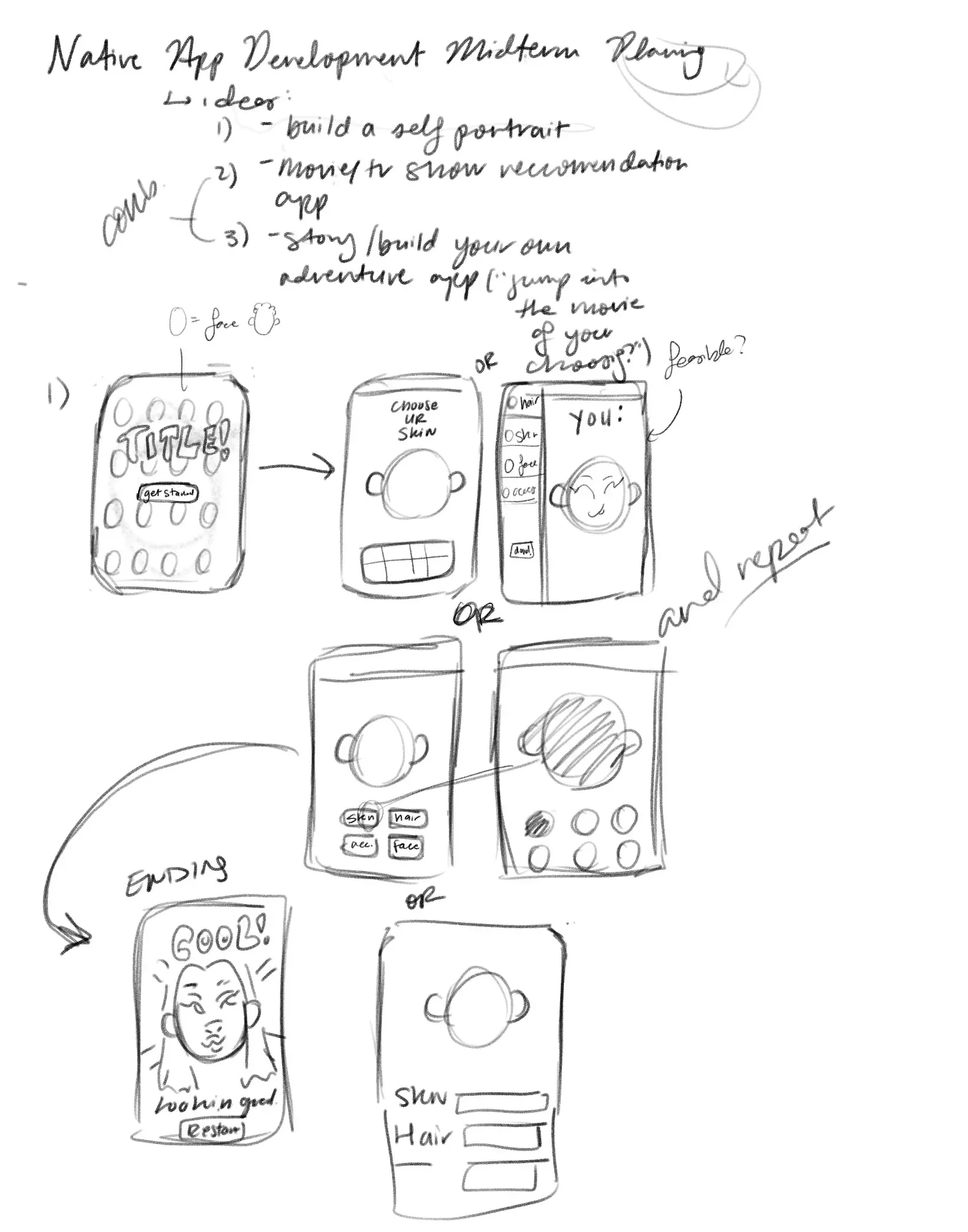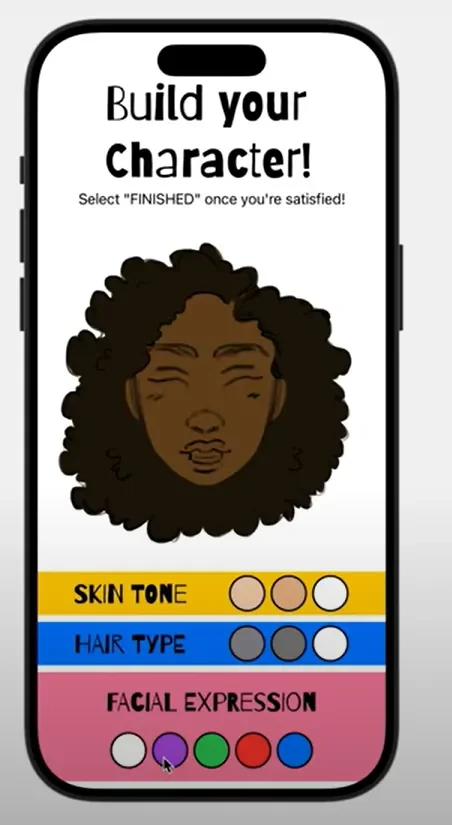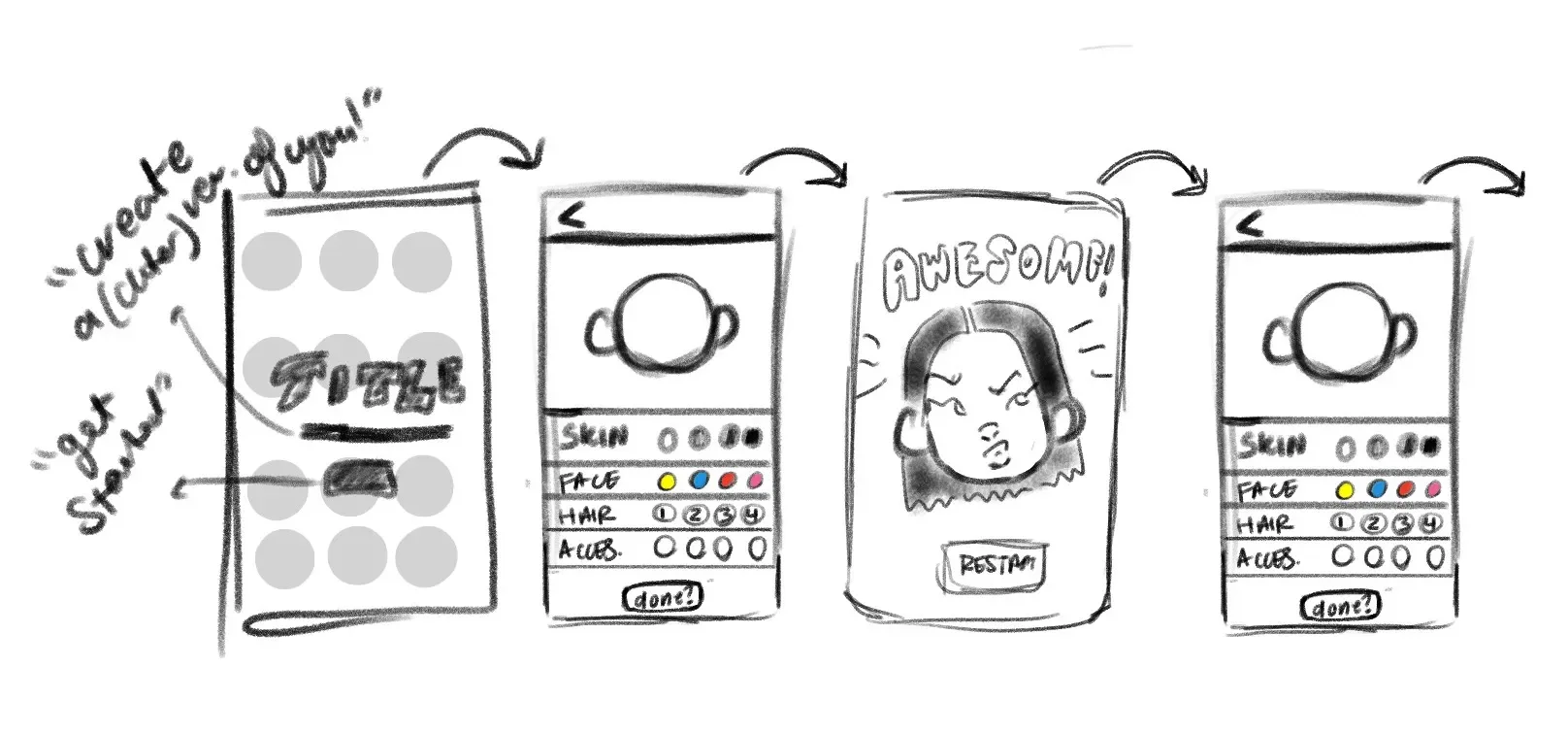Mymy’s Mini Mes - Swift App Prototype
Project Overview
In my Native App Development course (NMIX 4030), I designed and developed a customizable avatar app that lets users create a mini version of themselves using original illustrations I hand-drew in Procreate. I built the app entirely in Swift, combining my artistic creativity with technical precision to deliver an engaging and interactive experience. This project strengthened my development skills, challenged me to implement dynamic interface elements, and taught me how to effectively bridge design and functionality to optimize a smooth user experience.
Tools Used: Swift, Procreate, Canva
Problem Statement
I created this app to explore how thoughtful UX design and programming can come together to make a interactive experience users truly enjoy. I noticed that many beginner app projects focus on function over engagement, like to-do lists or calculators, and I wanted to build something that prioritized fun and self-expression. By letting users design their own character, the app invites creativity while demonstrating how design choices, from interface layout to color selection, directly shape user satisfaction.
Project Goals
My goal was to challenge myself beyond standard projects and experiment with visuals, user flow, and customization logic while strengthening my skills in Swift development.
✅Strengthen Swift development skills through responsive layouts and dynamic customization features and an intuitive user flow.
✅Blend design and functionality to create a meaningful, cohesive user experience.
✅Apply UX principles like accessibility, clarity, and playfulness to create an app that feels both technically sound and genuinely enjoyable to use.
Project Date: Spring 2025
Role: Developer, Designer
UX Process
I wanted users to feel creative freedom without confusion, mapping a smooth customization journey from start to save.
Wireframes/Paper Sketches
I created low-fidelity paper wireframes to explore layout structures and establish a clear interaction flow for avatar customization.
I focused on optimizing information hierarchy to guide users naturally through the creation process without cognitive overload.
I evaluated user pathways to minimize unnecessary steps and maintain a seamless sense of progress throughout the app.
I refined spatial relationships and touch targets with accessibility in mind, preparing a strong foundation for digital prototyping.
Design Decisions
I applied a color-coded labeling system to enhance visual distinction and improve scan ability.
I implemented dynamic button states to provide clear visual feedback for user selections.
I created a centered, hierarchical layout optimized for mobile usability and intuitive navigation.
I added subtle drop shadows to create depth and emphasize interactive elements.
Development
I focused on translating visual design into seamless functionality through Swift, building responsive interactions that made customization feel fluid and intuitive.
Swift Programming
I applied course concepts including variables, state & binding, stacks, buttons, and structs to bring the app to life.
Built a responsive layout using SwiftUI stacks for flexible, adaptive design.
Designed and integrated custom assets created in Procreate.
Used loops and boolean logic to manage interactivity and conditional features.
Developed a multi-view flow, connecting the Create and Final Character views with binding variables to store and display user input.
Reflection
💡 What Worked
I connected UX thinking with Swift logic, making design decisions that directly improved usability.
The customization flow stood was intuitive and guided users smoothly from start to save.
🌟 Key Takeaways
This project deepened my skills as both a designer and developer, strengthening my ability to blend engaging visuals with functional, user-centered design.
🔧 What I’d Improve
Refine button layout and category organization for smoother navigation and better accessibility.
Take a more structured, efficient coding approach to reduce repetition through planning and research.








